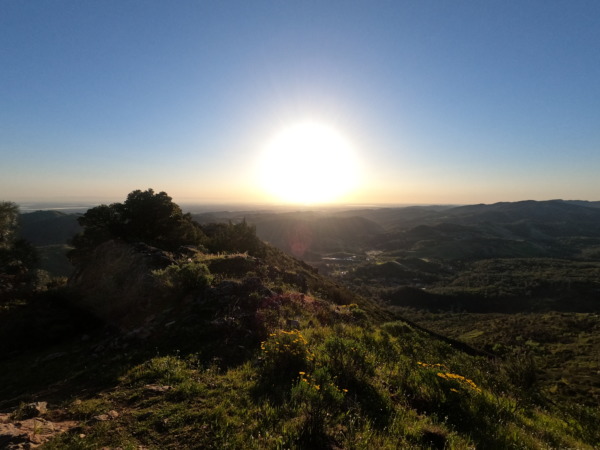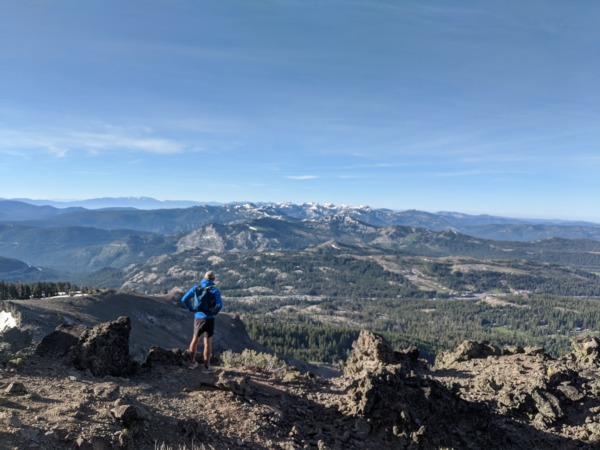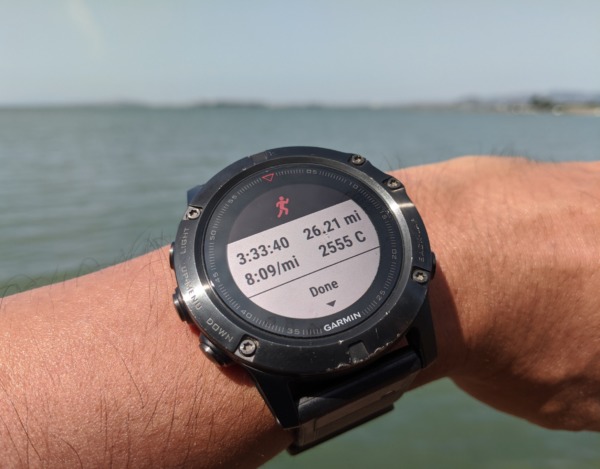This past weekend, I attempted to climb Mount Rainier via its most popular and generally accessible route, the Disappointment Cleaver, with two friends, Paul and Abby. We didn’t summit.
Despite some inescapable twinges of regret that I feel now, this trip represented a lot of firsts for me. It’ll likely be a core piece of my relationship with climbing, the outdoors, and with myself — a topic for another day.
But first, a trip report.

Contents
A Trip Report
It’s hard to write trip reports for attempts that “fail.” That’s probably one reason why over 70% of reports on Peakbagger and elsewhere describe successful Rainier summits, despite a overall average summit rate of <50% for Rainier (with another reason being that perhaps folks, including myself, often think that failed-attempt reports aren’t as useful).
Still, here was my experience.
My team of 3 checked into the Paradise Wilderness Information Center (WIC) around 9:15am on Friday morning (7/26), began hiking from the Paradise trailhead around 10am, and reached Camp Muir just under four hours later, around 2pm.

The WIC, Skyline Trail, and Muir Snowfield
While getting our climbing permit at the Paradise WIC, the ranger described what we had already seen posted on the official NPS Rainier Climbing blog: a crucial snow bridge on the standard DC route had collapsed earlier in the month, and that two new routes had been built by guiding companies in the previous week (detailed in their July 21st post):
What we didn’t know was that the red route (which would’ve required a ~50 meter section of ~55 degree snow) had gone out of condition just days after it was established. This left only the blue route as the only remaining established route, described in the blog post as “involv[ing] less difficult climbing but ha[ving] a few sections of ladders and fixed lines to manage. It also travels under a large serac for a period of time.”
This meant that our team would need to accept seracfall risk, if we were to summit.

On the way up, we encountered a descending team of 4 who had attempted to gain the summit that morning. They turned back at the top of the Cleaver after determining that the chance of the house-sized serac falling was too high for them to accept. If we were to attempt the summit, we would absolutely need complete the roundtrip before daylight, they strongly cautioned.

Camp Muir
Because the bootpack to Camp Muir was so well-established, with little to no recent snowfall, reaching the 10188-ft high camp was straightforward. Weather was on our side, with mostly clear skies. Temps at camp were a relatively balmy mid-40’s F, minimal wind.

As we arrived, I was surprised to see fewer people than expected (though there were still dozens of people). Because I previously had trouble getting Camp Muir permits, we had expected over 100 people at camp (with its 110-person capacity). This meant that we had an easy time finding a good spot for our tent!

Bad News
Around 3pm, we left camp and returned to the Muir Snowfield for self-arrest, rope travel, and rescue drills.
As we were practicing, though, we missed a ranger briefing, which apparently occurred around 4-5pm. We realized this after Abby spoke with other climbers at camp. So we visited the ranger hut and asked for an update.
Reddit Thread: Massive ice fall above DC on Rainier 7/25 at 7:30am
Source: https://streamable.com/2item9
As it turned out, the serac had fallen that morning, destroying the remaining established route. If we were to attempt the summit, the ranger kindly warned, it would be a “choose-your-adventure” option, requiring a high level of route-finding and rescue skill.
She suggested that, if we were to choose not to attempt the summit, we could instead continue another 1000 vertical feet on the route to the next safe zone, on the Ingraham Flats, near the high camp there, where we could see the Cleaver, serac and crevasse fields for ourselves.
Later, when we arrived home, I found that the NPS blog had been updated with a 7/27 note:
In the last 24 hours the guided route above the Disappointment Cleaver was taken out by major Ice fall on the Ingraham Glacier. Due to the severe overhead hazard of house sized serac blocks the guides are no longer traversing from the top of the Cleaver toward Camp Comfort.
There is currently no guide established route. Guides are working hard at this time to establish a new route.
I also realized, later, after hearing that serac fall happened at 7:30am, that if the descending team that we’d encountered going up had indeed decided to continue, they could’ve easily been in the danger zone at the time of the serac fall. It could’ve also easily been us, if the serac fall had either happened a day later, or if we had started a day earlier.
Notably, this was the same place, and almost the same time, as the Ingraham Glacier icefall that swept 23 climbers and 6 guides down the mountain, killing 10 climbers and 1 guide, on Saturday, June 20, 1981, remaining the worst accident in American mountaineering history.

Deciding Not To Summit
After hearing the ranger’s description of the route’s current state and hazards, it was clear to our team that we would not attempt to summit that night. It also appeared that the vast majority of climbers at camp had also made that decision, except for what seemed to me like 2-3 teams.
So instead of setting our clocks for a 12am alpine start, we decided to take the ranger’s Ingraham Flats suggestion, which we would start at 7-8am the following morning.

The Ingraham Flats
Booting up across the Cowlitz and up the Cathedral Gap was no problem at all. It was the “easy” part, anyway. I later remarked that I’d never had a mountaineering trip this chill — which relieved me, in a way. Before we had decided to cancel our attempt, a headache had been slowly intensifying, and I had dreaded both not getting much sleep and the possibility of mild altitude sickness (the usual suspects, I guess).
But with more sleep, I woke up refreshed and better acclimated.

On our way across the Cowlitz, we encountered a team of 5 that had left at 2:30am and gained 2/3 of the Cleaver, before turning back. We also encountered two teams of 2 that did in fact summit (with the understanding that teams of 2 = much more experienced and capable of self-rescue).

After crossing the Gap, we immediately saw the high camp there, a virtually naked Disappointment Cleaver immediately ahead of us, and finally the serac (and remnants of the seracfall the previous day).






Calling It
As we arrived back to camp, we began to practice crevasse rescue as planned.
I had booked a second night at Camp Muir in case we wanted to try again, but it seemed unlikely that a route meeting our skill level and risk tolerance would be possible above the Cleaver by nighttime. (Abby had also unfortunately tripped and bumped her knee in the Gap on our return trip, and over time, it wasn’t improving.) Given these factors, we decided that we would try again next year.
With that, it was time to go home. What a whirlwind of a weekend. Better luck next year.




Fin.




One Comment